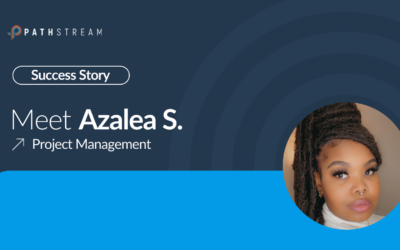Seventy-nine percent of frontline employees say a lack of career advancement is the number one factor motivating them to leave their employer. To attract qualified applicants or retain skilled employees, your organization needs to be a place where people advance their careers. Organizations must give people opportunities to learn new skills, take on challenges, and publicize their efforts to job candidates.
Forward-thinking HR leaders are re-evaluating their benefits programs to become an employer of choice. In fact, 85 % of employees prefer attractive benefits over regular pay raises. One category that is growing in popularity is education benefits.
The following elements can help organizations revitalize their current education benefits program to attract and engage motivated frontline workers.

What are the successful elements of a robust education benefits program?
To create an effective education benefits program for your frontline workers, consider implementing the following best practices:
- Offer education benefits to all employees on the first day of employment.
- Remove any financial burden associated with education.
- Integrate career navigation into your program.
- Upskill or reskill employees by investing in certificate programs aligned with organizational talent mobility objectives.
- Align professional development with organizational purpose and objectives.
- Market education benefits internally and externally.
- Coach leaders across the company to promote professional development.
Broaden the eligibility criteria.
In the past, organizations offered benefits like tuition assistance to full-time employees after 90 days of employment. We recommend opening your program to all employees (full-time and part-time) on the day they start.
Expanding eligibility criteria will help you attract more motivated frontline talent and increase retention during the first 90 days of an employee’s career. In a Guild Education study, employers who offer education benefits increase their job applicants by 20% and achieve a 93% retention rate for employees actively engaged in an education program compared to an average retention rate of only 56%.
Remove any financial burden associated with education.
Employees are less likely to participate in tuition assistance programs if they have to pay upfront. Offering a more generous benefit has been proven to increase utilization because it relieves employees of financial responsibility or avoids long waits for reimbursement.
Walmart’s Live Better U program covers the costs of tuition, fees, and textbooks in advance. Frontline employees who participated in Live Better U were less likely to leave the company than those that didn’t. In addition, frontline workers who participated were 80 percent more likely to get promoted than non-participants.
Integrate career navigation into the education benefits program.
Career navigation in the form of career coaching is often overlooked. Organizations with limited resources expect managers to serve as defacto career coaches. But, six-month check-ins and annual reviews aren’t enough anymore.
Career coaches help employees form higher career aspirations, which makes them an essential strategic resource for forward-thinking HR leaders. A career mobility platform built by a third-party firm will increase employee productivity and performance, retain valued employees, and be cost-effective.
Upskill or reskill employees by investing in certificate programs aligned with organizational talent mobility objectives.
Think beyond traditional college and build upskilling programs that teach skills that align with your industry. Focus curricula on filling the gaps your industry needs. Training in customer relationship management software, digital marketing, SQL, or data analytics that complements your industry enables your workforce to apply their new skills at work.
Align professional development with organizational purpose and objectives.
An education benefits program is an integrated investment into key organization strategies such as internal talent development and talent acquisition.
For example, internal talent development can leverage tuition assistance programs to build generalized and specialized skill sets within your company. In the past, upskilling was left to the learning and development teams. Still, organizations now recognize that tuition assistance is another useful tool to advance people in specific career paths within an organization.
Promoting the success of education benefits programs strengthens the talent acquisition strategy. Tuition assistance, career coaching, and more improve an employer’s brand and enhance their ability to compete for motivated job seekers.

Market education benefits internally and externally.
Internal Campaigns: Building visibility, interest, and participation requires multi-channel communication and marketing. Low-lift examples include emailing employees quarterly newsletters covering topics such as how to access education benefits or employee success stories. Disney repurposed hotels and other company areas to provide quiet study hall spaces for employees to do schoolwork during breaks.
External marketing and communication: Offering tuition assistance shows high-value candidates that your company is invested in their professional and educational growth. It can even be the deciding factor between your offer and a competing employer’s job offer. In job postings, describe career advancement opportunities and share information about the roles previous employees at that level ascended from. This will help publicize professional development opportunities available through your organization.
Endorsement matters.
While leaders aren’t career coaches, they should serve as advocates for education benefits programs.
Ensure support by integrating benefits available in your program into all significant talent practices (workforce planning, performance management, succession planning, learning, and development, etc). This ensures that career navigation counseling or tuition assistance opportunities sync with other people-centric initiatives.
To get buy-in, we recommend including a wide range of stakeholders early in the process of revamping education benefits. To learn more about assembling the right team, download our toolkit: The Education Benefits Your Frontline Workers Want.
Was this helpful?
Thanks! What made it helpful?
How could we improve this post?







